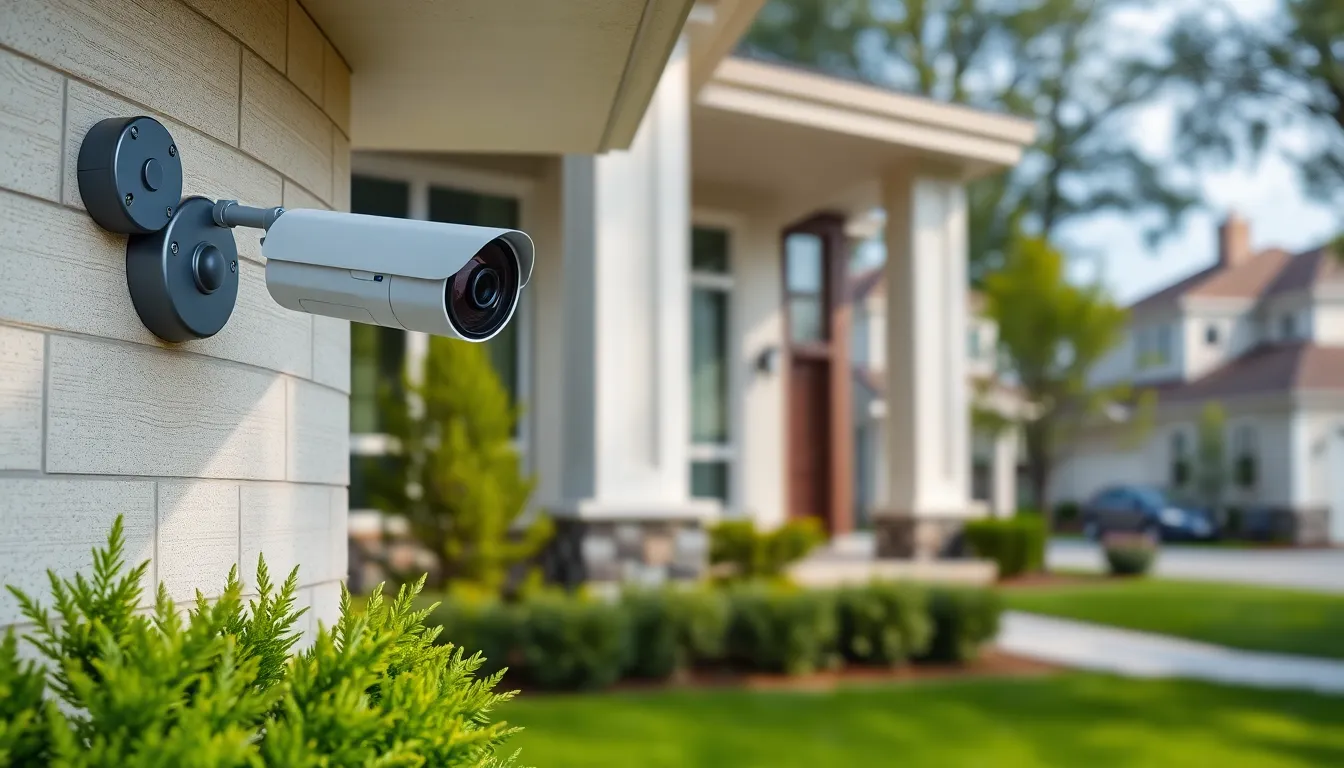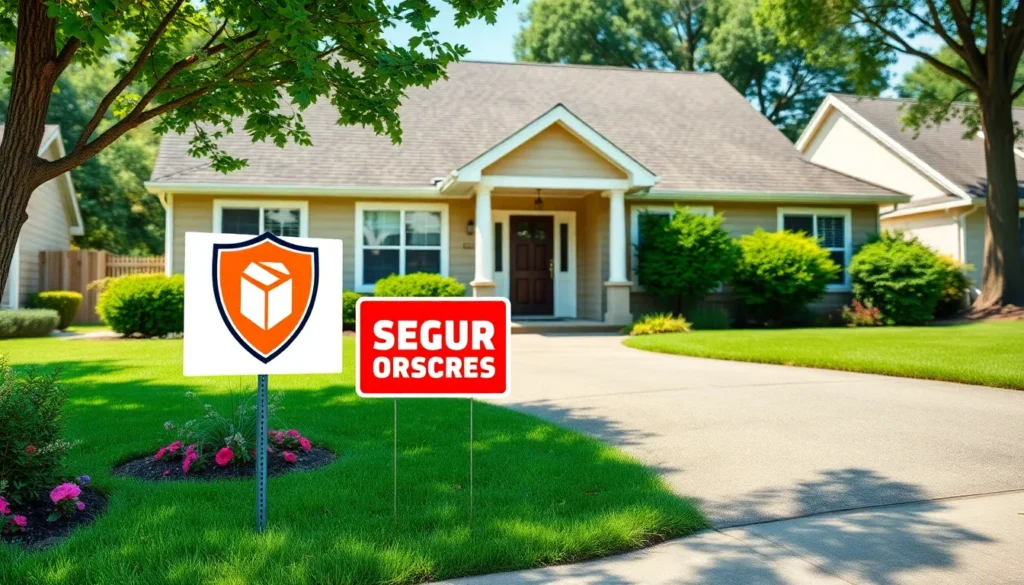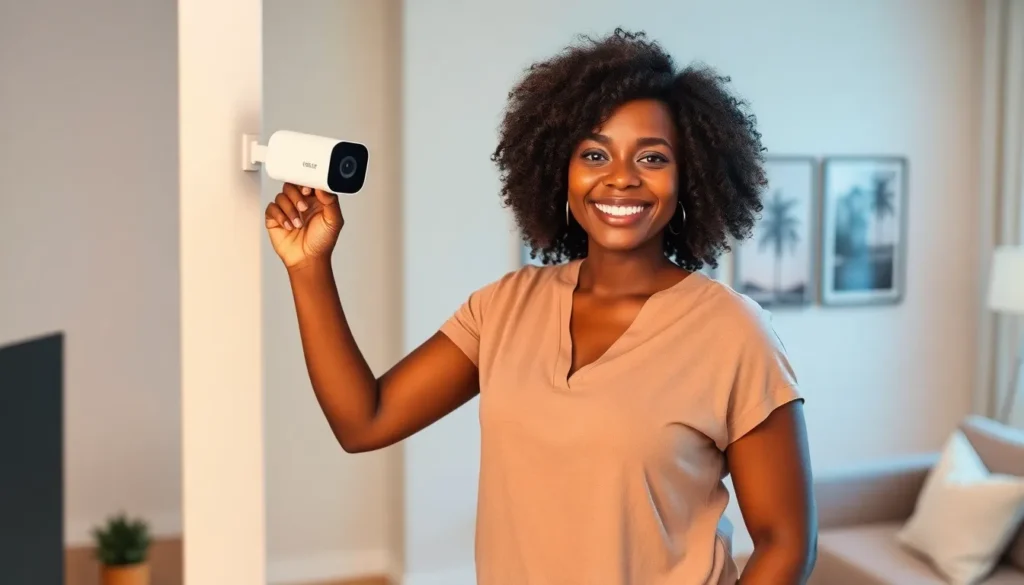In today’s world, home security is more important than ever. With rising concerns about theft and vandalism, homeowners are turning to advanced technology for peace of mind. CCTV systems have emerged as a reliable solution, offering real-time surveillance and recording capabilities that help protect homes and families.
CCTV cameras not only deter potential intruders but also provide crucial evidence in case of incidents. They come in various types and features, making it easier for homeowners to choose a system that fits their specific needs. As technology continues to evolve, the benefits of installing CCTV for home security become increasingly clear, transforming how people safeguard their living spaces.
Table of Contents
ToggleOverview of CCTV for Home
CCTV systems serve as vital tools for enhancing home security. They enable continuous monitoring and provide homeowners with a sense of safety. Multiple camera types are available, including dome, bullet, and PTZ (pan-tilt-zoom), each offering distinct advantages.
CCTV cameras can be categorized into wired and wireless options. Wired systems typically provide more stable connections and are less susceptible to interference. Wireless systems offer easier installation and flexibility in camera placement. Most modern cameras include features such as night vision, motion detection, and cloud storage, enhancing their functionality.
Homeowners can take advantage of various features when selecting a CCTV system. Remote access allows users to monitor their property from smartphones or computers. Two-way audio enables communication with visitors or potential intruders. HD video quality ensures clear imagery, making it easier to identify faces and details.
CCTV systems not only deter criminal activity but also facilitate a faster response from law enforcement. Recording capabilities ensure that incidents can be reviewed later, providing valuable evidence for investigations. Many insurance companies may offer discounts on premiums for homes equipped with CCTV, highlighting their financial benefits.
With the continuous advancement of technology, smart CCTV systems integrate with home automation systems. This synergy allows for seamless control of security features, enhancing overall safety. Options like facial recognition and artificial intelligence provide additional security measures, helping homeowners make more informed decisions regarding their safety.
Benefits of Using CCTV for Home

CCTV systems significantly boost home security by providing surveillance and peace of mind. Their features offer multiple advantages that make them an essential element for modern homeowners.
Enhanced Security
Enhanced security results from the visible presence of CCTV cameras, which act as a strong deterrent against crime. Intruders are less likely to target homes with visible security measures. In addition, recorded footage serves as vital evidence, helping law enforcement in investigations. Homeowners also benefit from features like motion detection, which offers instant alerts for suspicious activities, allowing for a quicker response to potential threats.
Remote Monitoring
Remote monitoring enhances convenience and accessibility for homeowners. With modern CCTV systems, users can access live feeds through mobile devices from anywhere. This capability provides real-time situational awareness, allowing for prompt decisions during emergencies. Many systems also support cloud storage, ensuring that footage remains secure and accessible even if equipment gets damaged or stolen. Two-way audio features further allow homeowners to communicate directly with visitors or potential intruders, adding another layer of security.
Types of CCTV Cameras
Various types of CCTV cameras cater to distinct surveillance needs, enhancing home security. Understanding the differences between these options aids homeowners in making informed decisions.
Wired vs. Wireless
Wired cameras provide reliable connections and consistent power, reducing the risk of interference. These systems typically require professional installation, with cables connecting the cameras to the recording device. They’re ideal for permanent setups where interference-free operation is crucial.
Wireless cameras offer flexibility and easier installation, using Wi-Fi for connectivity. They suit temporary installations or homes lacking structured cabling. However, they depend on strong Wi-Fi signals and may face interruptions during network issues. Homeowners appreciate the convenience of relocating these cameras to adapt to shifting needs.
Indoor vs. Outdoor
Indoor cameras target specific areas within homes, like hallways or living rooms. They often come with features such as wide-angle lenses to capture larger spaces. Designed for lower lighting, these cameras can include vision capabilities for nighttime monitoring.
Outdoor cameras withstand harsh conditions and often feature weatherproof housings. They typically incorporate infrared night vision and more robust sensors to detect movement outdoors. Their placement focuses on perimeters, entries, and driveways, helping deter potential intruders and ensuring comprehensive monitoring of the home’s exterior.
Key Features to Consider
Homeowners must consider several key features when selecting a CCTV system. These features greatly influence both performance and effectiveness in enhancing home security.
Resolution and Video Quality
High-resolution cameras provide clear images crucial for identifying individuals and details during incidents. Surveillance cameras come in various resolutions, such as 720p, 1080p, 4MP, and 4K.
| Resolution | Description | Best Use |
|---|---|---|
| 720p | Often considered “standard definition” | General monitoring |
| 1080p | Offers full HD quality, suitable for most needs | Commonly used for home security |
| 4MP | Enhances clarity with higher detail | Essential for larger areas |
| 4K | Ultra high-definition for maximum detail | Ideal for high-security environments |
Camera resolution affects the image quality throughout various lighting conditions, ultimately influencing recognition capabilities.
Night Vision Capabilities
Night vision is critical for monitoring during low-light situations. Cameras offer different types of night vision, including infrared (IR) and color night vision.
- Infrared Night Vision: Uses IR LEDs to capture images in complete darkness, providing visibility up to a specified range. The range typically varies from 30 to 100 feet.
- Color Night Vision: Utilizes advanced sensors and low-light technology to produce full-colored images even in dim environments.
Homeowners should prioritize cameras with robust night vision capabilities to ensure continuous surveillance regardless of lighting conditions.
Installation and Setup
Setting up a CCTV system requires careful planning and execution to ensure maximum effectiveness. Homeowners can choose to install the system themselves or seek professional assistance based on their expertise and comfort level.
DIY Installation Tips
- Select locations: Identify key areas for camera placement, such as entry points, driveways, and blind spots. Ensure these locations provide optimal coverage and visibility.
- Check connectivity: For wired systems, assess the distance from the camera to the recording device and plan cable routing. For wireless systems, confirm strong Wi-Fi coverage to avoid connectivity issues.
- Install cameras: Mount cameras securely using appropriate hardware. Ensure they are angled for maximum visibility and positioned out of reach to prevent tampering.
- Configure settings: Access the camera’s settings via the app or web interface. Adjust resolution, motion detection sensitivity, and notification preferences according to individual security needs.
- Test the system: Verify camera functionality by checking the video feed. Make adjustments to angles and settings as necessary, ensuring optimal performance.
Hiring Professionals
- Assess expertise: Choose experienced professionals with a strong track record in CCTV installation. Look for those who understand specific requirements and regulations relevant to home security.
- Request consultations: Schedule consultations to discuss security goals, camera placement options, and system recommendations tailored to the home layout.
- Review estimates: Obtain detailed estimates covering equipment and labor costs. Ensure comparisons include warranties and after-installation support.
- Verify credentials: Confirm that the installer possesses necessary certifications and insurance. This step protects homeowners from liability during the installation process.
- Ensure follow-up support: Choose a service provider that offers ongoing maintenance and technical support. This support is crucial for resolving issues and maximizing the system’s lifespan.
Investing in a CCTV system is a proactive step toward enhancing home security. With various options available homeowners can find solutions tailored to their needs. The technology not only deters crime but also provides peace of mind through real-time monitoring and recorded evidence.
As features like night vision and motion detection become standard homeowners can expect increased safety and responsiveness to potential threats. Whether opting for a wired or wireless system careful planning during installation ensures optimal performance.
Ultimately the right CCTV system can transform a home into a safer environment making it a worthwhile investment for any homeowner concerned about security.


